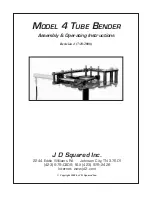
CRIRES User Manual
Doc. Number: ESO-254264
Doc. Version: P109.4
Issued on:
2021-12-01
Page:
68 of 99
Document Classification: ESO Internal Use [Confidential for Non-ESO Staff]
6.4.2 Nodding details
·
Number of exposures per nodding position
(TSF:
SEQ.NEXPO
): is the number of
exposures at any single nodding (offset) position.
·
Number of nodding cycles
(TSF:
SEQ.NABCYCLES
): sets the number of AB or BA nodding
cycles. Setting this parameter to 0 implies staring at the slit centre only, without any nodding
applied. If set to a value ≥1, positions A and B are each visited
SEQ.NABCYCLES
times, and
the total integration time of the CRIRES_spec_obs_AutoNodOnSlit template is given by:
DET1.NDIT
x
DET1.DIT
x
SEQ.NEXPO
x
SEQ.NABCYCLES
x
2,
whereas in staring mode (
SEQ.NABCYCLES
= 0):
DET1.NDIT
x
DET1.DIT
x
SEQ.NEXPO.
·
Nod throw along the slit
(TSF:
SEQ.NODTHROW
) is the nodding throw, or telescope offset
between two nodding positions. It should be large enough so that the spatial profiles of the
target in the two nodding positions do not overlap but must be smaller than the slit length of
10”. The nodding positions are located symmetrically (at
SEQ.NODTHROW
/2) around the centre
of the slit. Because of the extended wings of the PSF a nodding throw of 6’’ is
recommended.
Important information for off-slit guiding: the SV guide star must always be visible in the field
of view of the SV detector (
Figure
27
). Users must ensure that this is the case when
employing nodding.
·
Jitter width
(TSF:
SEQ.JITTER.WIDTH
): refers to the small offset added to each nodding
offset (see §5.4.1.2). It helps correct for bad detector pixels.
SEQ.JITTER.WIDTH
gives the
width of the jitter box in arcseconds. The maximum offset from the nodding position is
therefore given by half of this value. The successive values of the jitter offset in a given
template are drawn from a set of 100 numbers determined from a Poisson random number
generator. Jittering is currently not possible for
SEQ.NABCYCLES
= 0 (staring mode). Upper
limit for jitter size is half the nod throw, but preferably much smaller so that the PSF from
the star never crosses the middle of the slit.
Examples for Nodding with different numbers of nodding cycles:
1. If
SEQ.NABCYCLES
= 1, then the telescope first points up along the slit to the A position,
which is at a distance equal to
SEQ.NODTHROW
/2 (if
SEQ.JITTER.WITDH
= 0) from the slit
centre. After
SEQ.NEXPO
exposures, the telescope nods to the B position: it points
down along the slit by
SEQ.NODTHROW
, and takes
SEQ.NEXPO
additional exposures.
Then the telescope moves back to its original position. The telescope has then
executed one AB nodding cycle.
2. If
SEQ.NABCYCLES
= 3, then the telescope first points to the A position, as defined in
the previous paragraph, and takes
SEQ.NEXPO
exposures. It then moves to the B
position, takes twice
SEQ.NEXPO
additional exposures. It then moves back to the A
position, when it takes twice
SEQ.NEXPO
exposures. Then, it moves a last time to the
B position for a last sequence of
SEQ.NEXPO
exposures before returning to the original
position. The telescope had therefore executed 3 nodding cycles: AB BA AB.
















































